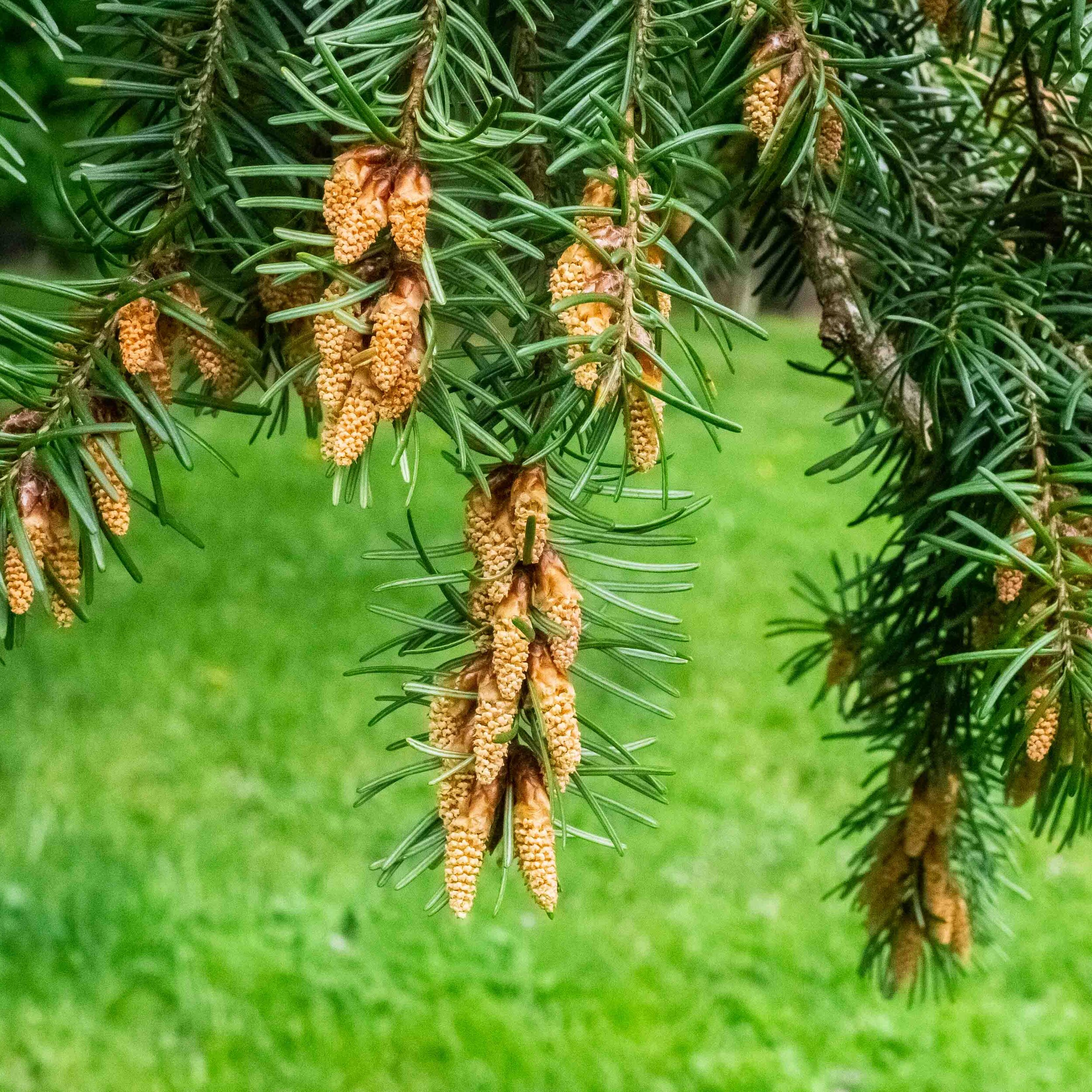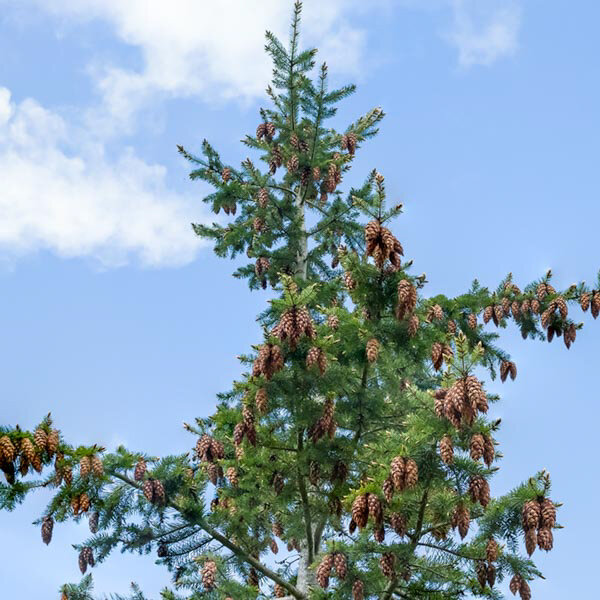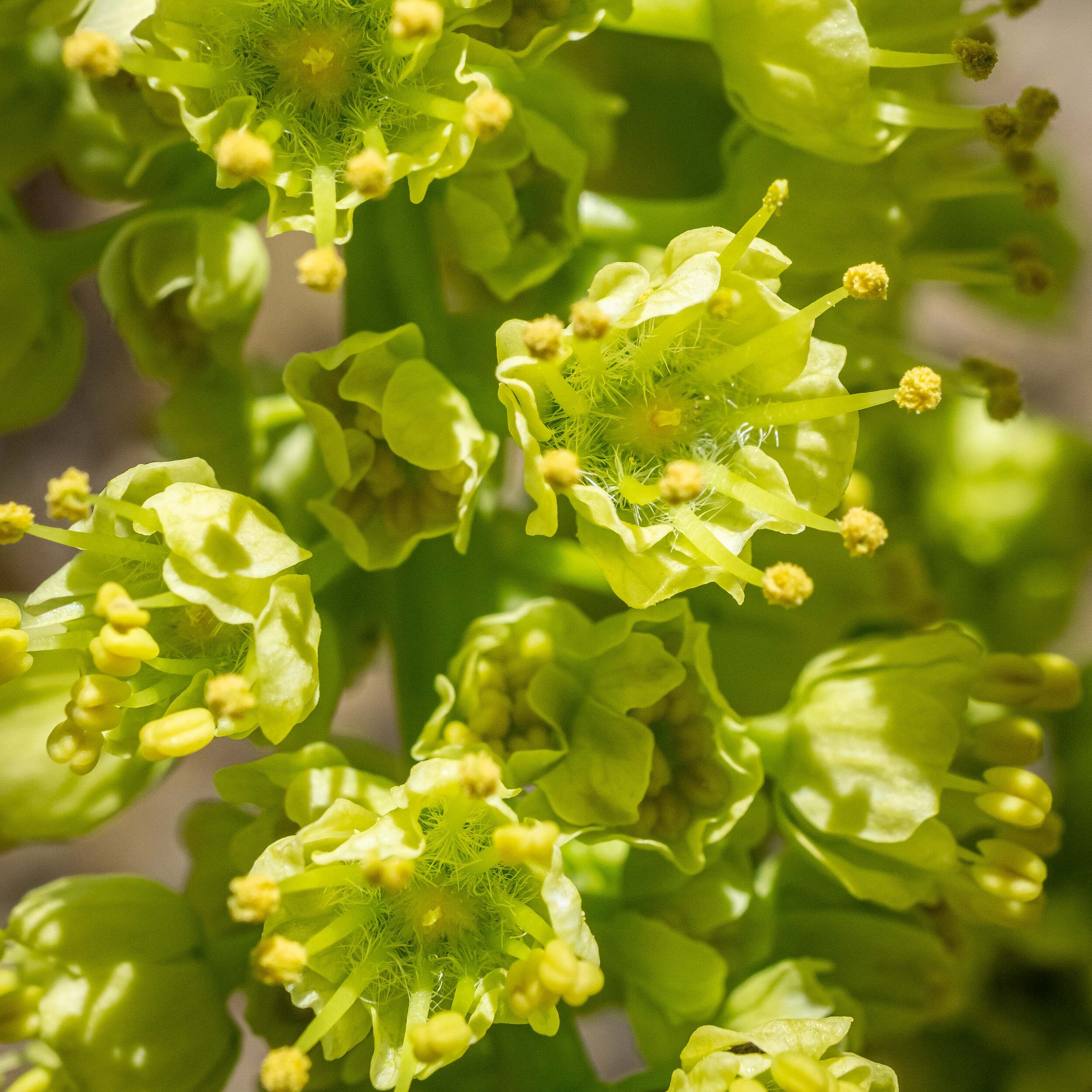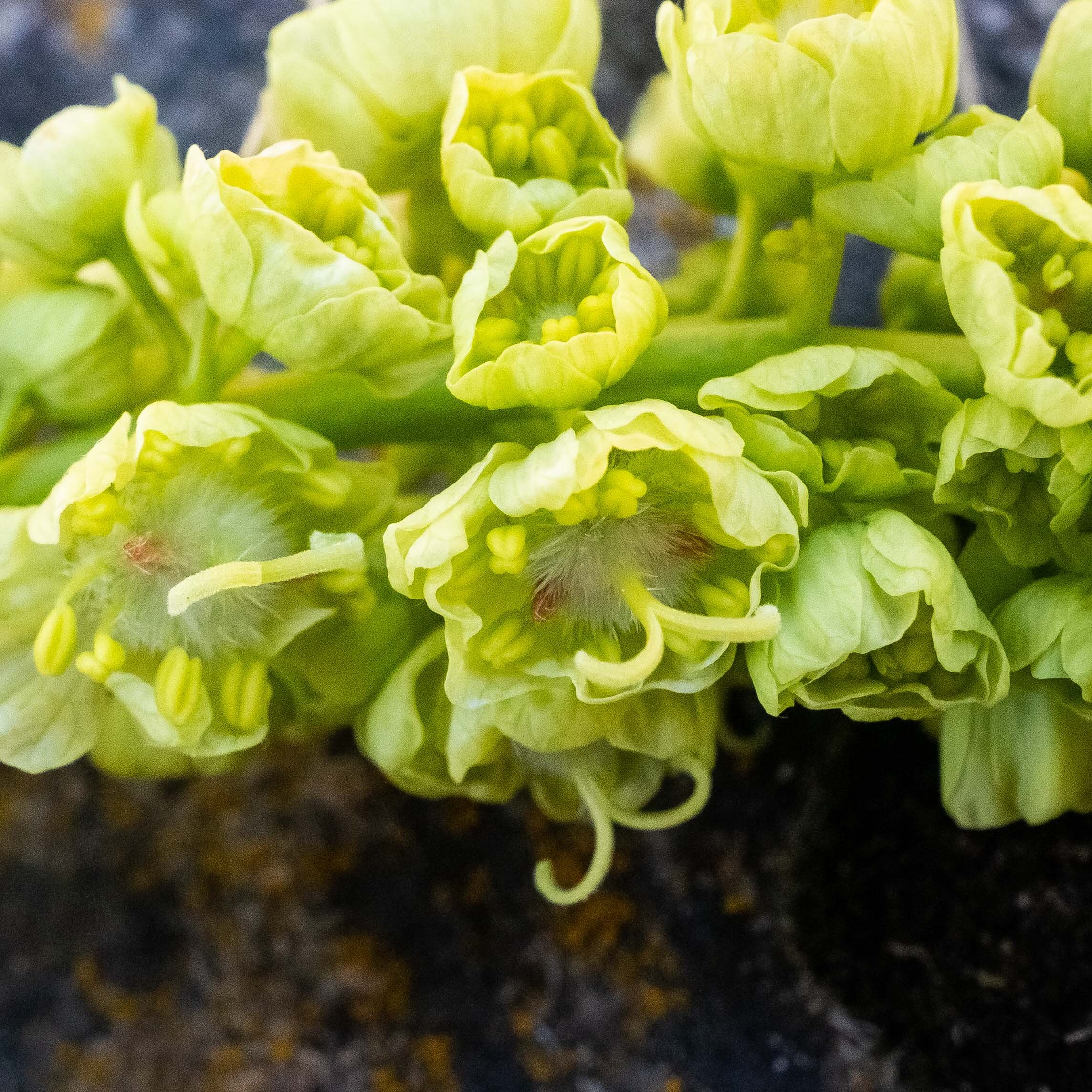Have you noticed yellow clouds of pollen recently? It’s mating season for PNW trees, much to the chagrin of allergy sufferers.
Trees produce countless pollen grains, each containing male gametes. A pollen grain may find its way to a female ovule and pollinate it, eventually resulting in a seed.
To do this, pollen has to get around. Most pollen travels by hitchhiking on insects or floating on the breeze.* Either way, the journey is largely random, which explains why trees produce so much pollen.
What happens if pollen fertilizes an ovule on the same tree from which the pollen originated? This would be self-pollination (or self-fertilization).
Or, what happens if pollen fertilizes an ovule on a different tree that is a close relative of the originating tree, such as a sibling or parent or progeny?
This can’t be good. Inbreeding reduces the fitness of the offspring and leads to birth defects.**
Pollen floating through the air or hitchhiking on an insect does not get to choose its destination. So how do trees avoid inbreeding?
Trees have a variety of tricks up their sleeves to lower the probability of inbreeding. Here are a few of those tricks.
Spatial separation: Female and male parts are in different trees
Some tree species are dioecious, which means that an individual tree has either female reproductive parts or male reproductive parts but not both. For dioecious species, two separate trees are needed to pollinate. Self-pollination is impossible.
Only a small minority of all tree species are dioecious. Some examples that are native to the Pacific NW include black cottonwood (Populus trichocarpa), Oregon ash (Fraxinus latifolia), and Pacific yew (Taxus brevifolia). None of these species can self-pollinate.
Spatial separation: Female and male parts are in different portions of same tree
For most species, an individual tree has both female and male reproductive parts (“monoecious”), so self-pollination would seem to be easy. But the two sexes can be located in different parts of a tree.
One example is Douglas-fir (Pseudotsuga menziesii), our region’s most common tree. On Douglas-fir, pollen cones (male) tend to grow in the lower part of the tree. (See the photo, above, showing a myriad of pollen cones near the bottom). In contrast, the familiar “mousetail” seed cones (female) grow far more densely in the upper part of the tree, like this:
Douglas-fir pollen is carried by wind, not by insects. Wind tends to blow horizontally. So Douglas-fir pollen tends to waft horizontally toward other Douglas-firs in the distance as opposed to blowing straight upward into the same tree. This is a simple yet effective way to minimize self-pollination.
Temporal separation: Female and male parts ripen at different times
Another method of minimizing self-pollination is to have female and male parts on a given tree that ripen at different times. This forces the tree to “mate” only with other trees and not itself.
A great example is bigleaf maple (Acer macrophyllum), which produces an extravaganza of blossoms from March through May. The blossoms are in cylindrical clusters and are pollinated largely by insects with possible wind pollination as well.
In a single bigleaf maple cluster, there are two kinds of flowers: (1) flowers that bear only male parts (stamens); and (2) “perfect” flowers that bear female parts (pistils) and male parts.
These two types of flowers ripen at different times. The U.S. Forest Service reports that, within and among populations, bigleaf maples may produce female flowers before male flowers or the reverse. Read here.
In other words, one tree’s female flowers will ripen at the same time as another tree’s male flowers. This variation in timing makes these trees less likely to self-pollinate.
Genetic/biochemical means: incompatible pollen
Yet another way to minimize self-pollination involves rejection of genetically identical pollen. To accomplish this, several different chemical mechanisms have evolved. Read here.
Summary
Overall, genetic variability promotes the survival of a species. Self-pollination inhibits genetic variability. Consequently, a range of mechanisms has evolved to minimize self-pollination.
Footnotes:
* Pollen can also be carried by hummingbirds, bats, water, etc.
** Plant inbreeding also has certain benefits, including that (1) it can keep and enhance a desirable characteristic; (2) it functions as a fail-safe if no other individuals are available for reproduction.




